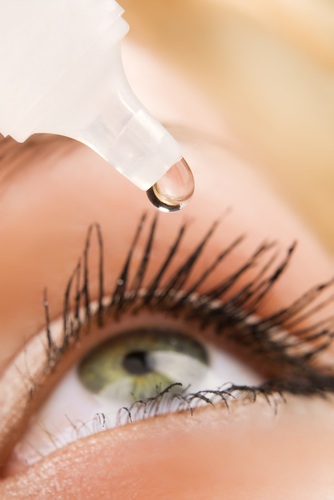
What is Dry Eye Syndrome?
The natural tears that your eyes produce are composed of three layers:
- Oily outer layer to prevent evaporation
- Watery middle layer to provide moisture
- Inner mucus layer to adhere tear film to the cornea
All three layers are produced by different parts of the eye and are necessary for proper lubrication. Dry eye is the term used to describe eyes that do not produce enough tears or tears with improper chemical composition in any of these three layers.
What Causes Dry Eye Syndrome?
- Environmental factors like dry or windy climates
- Air conditioning or heating
- Prolonged visual tasks, such as reading or working on the computer (when people have a tendency not to blink as frequently)
- Certain medications, including antihistamines, oral contraceptives, and antidepressants
- Problems with normal blinking, such as incomplete blinking or nocturnal lagophthalmos, which is the inability to fully close the eyes while sleeping
- General health conditions such as natural aging
- Alcohol and caffeine consumption, cigarette smoking, or vitamin A deficiency
Dry Eye Symptoms
Common signs and symptoms of dry eye include:
- Fluctuating and/or blurry vision
- Eye redness
- Foreign body sensation (such as the feeling of an eyelash in the eye)
- An itchy, scratchy, burning sensation
- Excessive tearing
Dry Eye Treatment
If you suffer from chronic dry eyes, making a few simple changes in your habits or environment can help provide dry eye relief.
- Blink frequently to spread tears uniformly over the eyes, especially when reading or working on the computer.
- Change environmental factors if possible. Avoid wind and dust, and increase the level of humidity by using a humidifier in your home.
- Use artificial tear solutions, such as Refresh Plus.
- Use eye gels, which are a higher-viscosity lubricating agent, such as Refresh Celluvisc or Refresh PM ointment.
- Apply warm compresses to increase the stability of the oily outer layer.
- Take flaxseed oil or a fish oil supplement.
- Consult with your doctor about inserting punctal plugs to slow the drainage and loss of tears.


